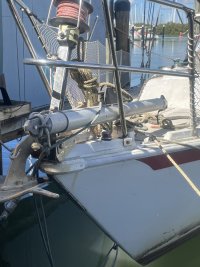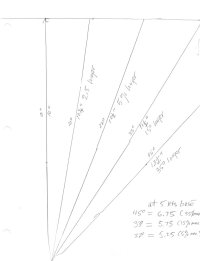My E34 has no mast track (nor uphaul/downhaul) for a pole. Of course, I could add one, but it is not cheap (unless one is quite comfortable drilling and tapping their own mast while it is stepped...)
So I have two questions:
1) Is it tractable to just sail a bit off of dead downwind (DDW), such that a genoa stays full without a pole, or is that just a ticket to discomfort and sorrow on a longer passage (say, 2-3 weeks downwind)? I realize that would not be a racing strategy, but is it inadvisable if I am not in a big rush?
2) I have seen a "parasailor" spinnaker advertised; it seems to have a wind-inflated cross-wing that essentially stabilizes it and keeps it open without a pole. Is that a better (or equally good) option, or on a longer passage does one just need a pole eventually?
Hydrovane is an official Watt&Sea distributor for North America and Europe. Hydrogeneration and hydrogenerators fit our customer needs for long distance sailing and liveaboard sailboats.

hydrovane.com
I am finding the idea of no pole rather tempting, as I always found them a hassle, and while singlehanding the hassle seems larger -- and frankly the safety issue dancing around on the foredeck to do it. I know Christian did it at age 90, but... I am much younger and yet much less confident than that. Plus, maybe the cost is similar/less for the parasailor since I wouldn't need to add a mast track or pole for it.
I may post this in a separate thread, but it seems maybe I should just continue here:
My E34 does not have a spinnaker halyard or crane, just two jib halyards exiting via a paired block at the masthead. One is attached to the top of the jib's roller furler... which raises the question:
3) For something like the Parasailor (or any asymmetrical/drifter), do I need to get a crane and external block added to the top of the mast, and then run an external halyard (either to prevent fouling the halyard attached to the jib, or to reduce chafe)? Or is it not unreasonable to just use the spare jib halyard for that if it's only periodic 3-week passage, and mostly only a few days here or there?
Many thanks for any thoughts/advice!


